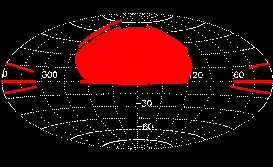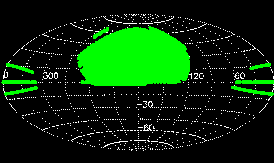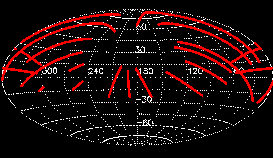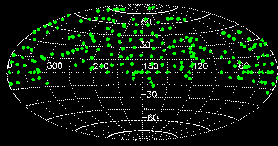
|
The Sloan Digital Sky Survey (see www.sdss.org for general information) mapped one quarter of the entire sky and performed a redshift survey of galaxies, quasars and stars. Data Release 7 (DR7) is the seventh major data release and provides images, imaging catalogs, spectra, and redshifts for download. It is the final data release of SDSS-II, an extension of the original SDSS consisting of three subprojects: The Legacy Survey, SEGUE and a Supernova survey. About DR7 explains what is new in DR7, and lists remaining or new caveats and subtleties in the data. This site is designed primarily to provide access to Data Release 7 for professional astronomers. Members of the public, including educators, can explore DR7 by starting at the SkyServer website. Please refer to the credits page for our sources of funding, participating institutions, and how to acknowledge the use of SDSS data in your publications. Please also note how to refer to SDSS sources in your publications using the proper IAU nomenclature for SDSS sources. The Sloan Digital Sky Survey is continuing through the Third Sloan Digital Sky Survey (SDSS-III). More information on that survey is available at www.sdss3.org. SDSS-III has completed its two subsequent data releases, Data Release 9, and Data Release 8 (DR8). Data accessThe data products page describes which data SDSS produces. Fits images, spectra and catalog tables are served by the Data Archive Server (DAS). You can also search and browse all catalogs and jpeg images through the Catalog Archive Server (CAS) database. For an overview of the various search forms, see the data access page. Imaging
Spectroscopy
Previous data releasesFor reference, we provide links to earlier data releases. The current data release always provides both the largest sky coverage and the highest-quality data and reductions.
Funding for the SDSS and SDSS-II was provided by the Alfred P. Sloan Foundation, the Participating Institutions, the National Science Foundation, the U.S. Department of Energy, the National Aeronautics and Space Administration, the Japanese Monbukagakusho, the Max Planck Society, and the Higher Education Funding Council for England. The SDSS was managed by the Astrophysical Research Consortium for the Participating Institutions. This is version $Name: $. This page was last modified on $Date: 2013/08/01 16:55:35 $ (UT). |
| News
DR10, the current data release from SDSS-III, is released July 30, 2013! DR9, from SDSS-III, is released Aug 1, 2012! DR8, the first data release from SDSS-III, is available. A new release of the Quasar Catalog complete through DR7 is now available SDSS Mirror sites to bookmark are listed here A paper describing the SEGUE survey is available.
A paper describing DR7 is available. |
||||




|
